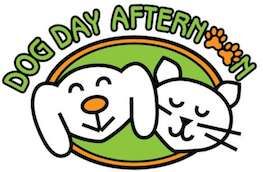Your favorite pair of shoes are gnawed beyond recognition. The chair leg, the table leg–pretty much every inanimate leg in your house–has been sheared and gouged by sharp teeth. It’s probably a lesson learned the hard way: some dogs love to chew. But it goes beyond that. Some dogs need to chew. It’s an inherent desire, an instinct that relieves anxiety, boredom, and frustration, as well as a means to strengthen jaw muscles and keep teeth clean. Fortunately for us (and our dogs!) there are many wonderful, natural chewing alternatives!
Which chews to choose:
- Natural Animal Parts: It may not sound good to you, but it is pretty much guaranteed that your dog will prefer to chew a pig’s ear over a remote control any day, if given the option. There are many dried animal parts available; tracheas, tendons, ears, noses, and fish skins are just to name a few. Not only do these chews have a natural appeal, they are safe for your dog to ingest and are relatively inexpensive. Be wary of products that have been dyed, ‘smoked’, or treated in any other way, to avoid unnecessary exposure to additives and preservatives. It’s also a good idea to check that your dog’s chew is made in the USA, as some other countries have a bad track record of pet product contamination.
- Raw Bones: Large raw bones, such as the knuckle bones from bison or cattle, are ideal recreational chews. These can be purchased fresh or frozen and their many textures will provide plenty of stimulation. In addition to the bone itself, your dog will find cartilage, marrow, and muscle to tear loose, and all the scraping and pulling and chewing will certainly give him a thorough teeth cleaning. But keep in mind that raw bones are messy, best enjoyed outside, in a crate or any other easy-clean area, and always under supervision. Sometimes too much marrow can cause a stomach upset, so it is often recommended that some of it be scooped out before you throw your dog a bone.
- Antlers: Naturally shed antlers from deer, elk, and other hooved animals are also an excellent chewing alternative. They are a true bone with marrow, not keratin, which makes them a source of calcium and phosphorus. Many dogs find them difficult to break down, making them one of the longest lasting chews available. They come in all shapes and sizes, and unlike raw bones and dried animal parts, they have a scent that dogs love, though it is imperceptible by people. When picking an antler for your pup, remember to choose one that is not chalky in appearance, or brittle, and preferably one that was shed and harvested naturally. Like any other chew, it is best to throw it away when it has been worn down to a size that poses a choking risk if swallowed.
Which chews NOT to choose:
- Rawhide: This dried layer of animal skin has been the chew of choice for a long time, but that doesn’t make it great. Since it is cheap and easy to produce, quality standards are low and these treats are all too often subjected to excessive processing, colored with potentially harmful dyes, bleached, preserved, and ‘flavored’ artificially. In addition to quality issues, rawhide tends to get gummy when chewed, which turns it into a dangerous choking hazard.
- Rubber: Sure, these colorful toys may squeak and squeal and delight your dog to no end, but a more aggressive chewer will tear a carelessly produced rubber chew in minutes. This means potentially swallowing fragments of rubber that can cause choking or digestive problems. Of course, there are exceptions, and there are U.S. companies who have conscientiously created safer rubber toys that are practically indestructible, and free of heavy metal paints and other harmful materials. So select discriminately and remember, supervision is the key.
Since every dog is different, it’s important to know which of these chews is most suitable. Some may chew obsessively, not resting until their treat is gone, while others will merely chew until their drive is satiated, take a break, then take interest again days or even weeks later. Through trial and error, find a favorite, or have a variety of options on hand to keep things interesting. By offering different chews, the furniture will be safe, shoes will go unscathed, and life will be less stressful for you and your dog!

